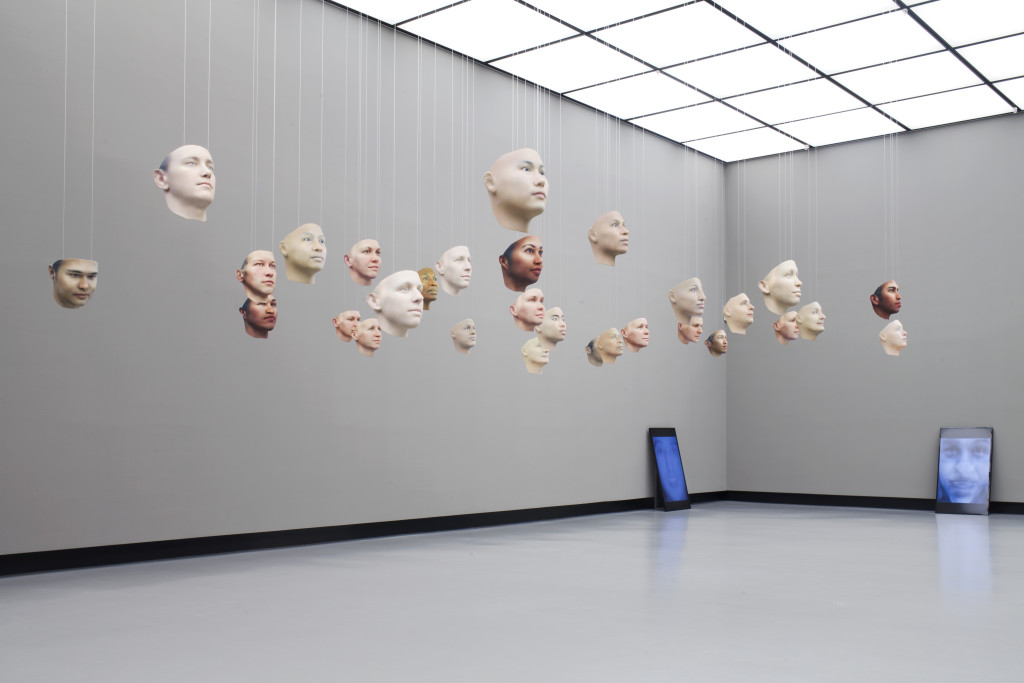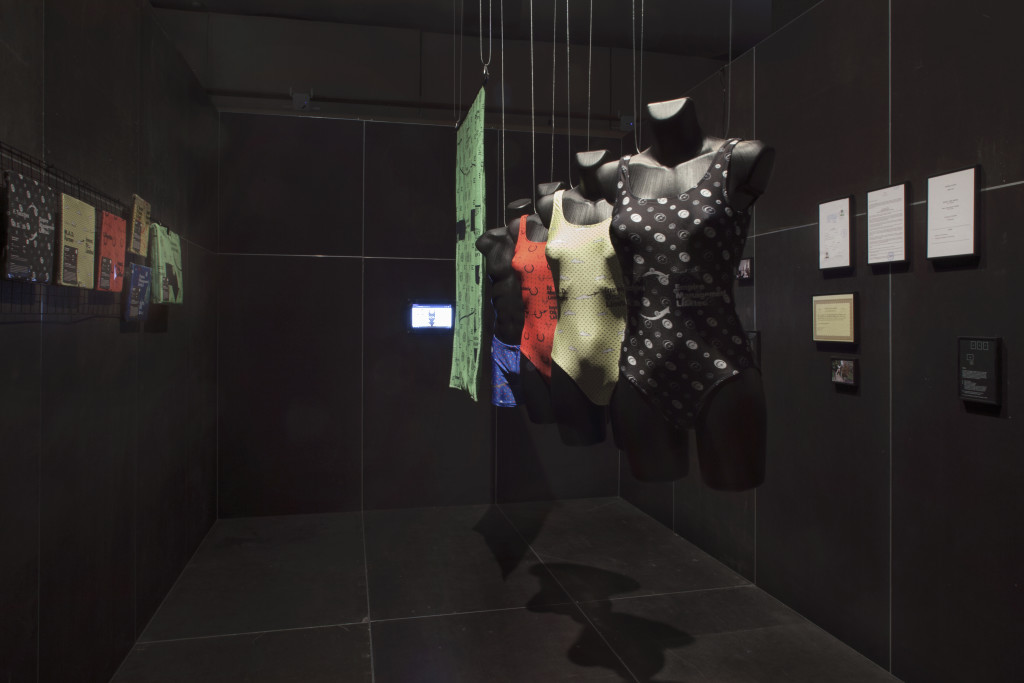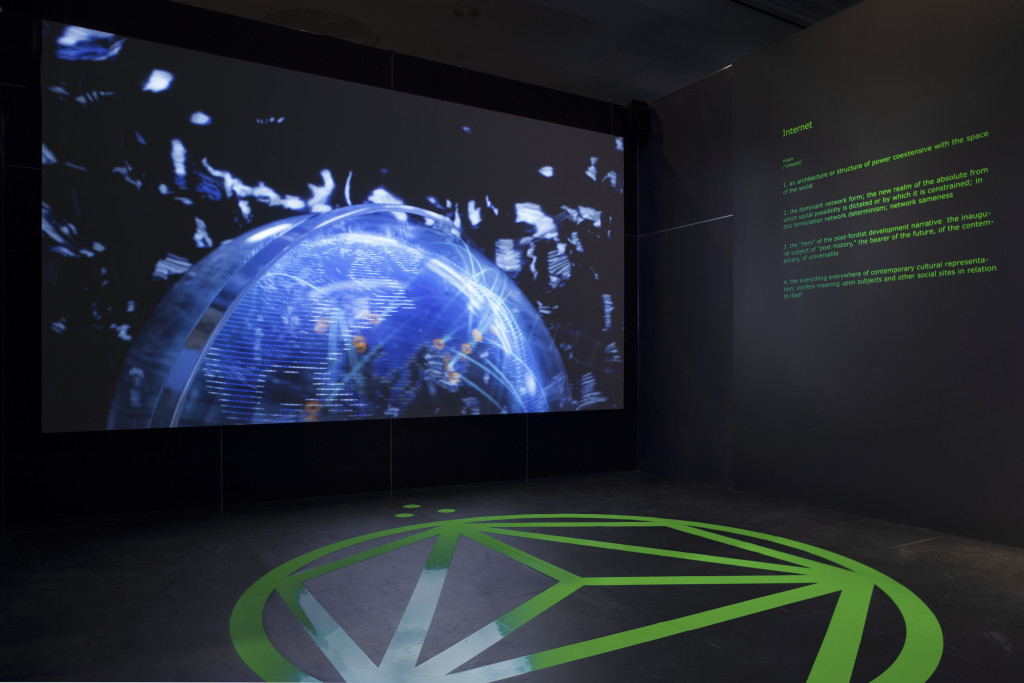Face Value: Transmediale 2018
by Vanessa Gravenor
First ponderings of the 2018 transmediale Face Value: Bill Viola is present.1 Viola, who started his career in the 70’s with experimental films, has become known for conflating digitally with ornate, grandiose experiences. The Greeting (1995), for example, shows a slow-motion digital adaptation of the Visitation by Italian Mannerist Jacopo Pontormo. Viola exemplifies the failures and simple translations of grandiose artworks into highly-funded, expensive digital artworks. Though literally not present in the program of the transmediale, an exhibition and music festival that occurs annually in Berlin and is centered on technology, the deadlock exemplified by Viola’s artwork made an appearance. The 2018 transmediale theme was Face Value, riffing on facial recognition technology. It consisted of a nearly week-long lecture program and a series of exhibitions, performances, and concerts—“Territories of Complicity” and “A Becoming Resemblance” at Haus der Kulturen der Welt, and “Turmoil” at Kunstlerhaus Bethanien (part of the CMT music partner festival). The festival’s inherent focus and dedication to technology presented a challenge: to move beyond the monolithic nature of the medium.

Photo: Paula Abreu Pia.
Seen in parallel to the entire program of transmediale, the mysticism of digitality lurked behind most works, for instance, in Anne De Vries’ Uncanny Valleys of a Possible Future, which featured CGI renderings of a crowded stadium, paired with a disembodied female voice who narrates poetic statements. As such, De Vries’ work was a successful critical Berlin art work, as it employed CGI, female disembodied voice, and techno nightclub settings.2 Another work that packaged for success was the Demystification Committee’s work Offshore Investigation Vehicle (2017), a research project examining the “secretive movement of money.” In launching a collection of beachwear, the project employs a dual critique of Object Fetishism and money laundering that often happens through and by artworks. Becoming a corporation, launching a fashion label, and calling oneself some variation of Off Shore seems to be the new pop and very much distanced from any critique.

Perhaps it is unfair to say that only Bill Viola was present. The reincarnated spirits of the network and the rhizome made their usual appearances. The rhizome structure appeared in James Ferraro’s Plague, which sonically and visually probes the landscape of our accelerated capitalist present: one that Steve Jobs has programmed and that is increasingly becoming controlled by AI and big data. Accompanied by artist Nate Boyce’s visuals, the performance consists of an hour of CGI renderings of a large plastic cube bouncing through space. Within the cube, a root-like networked form displays a monitor flashing different faces. Over this CGI video, acoustics aggressively pound out towards the viewer, stimulating a sensory overload. This continues when actor Christoph Schüchner appears on stage scuttling under flashing lights. His movements suggest a reformulation of Kafkaesque Gregor, and he pontificates phrases relaying the toxic banality of language organized around technology. The finale consists of a chorus of white individuals clad in Gap style jeans and white Tee-shirts in bald caps sporting VR-head sets. Keyword: white.

To be fair, many works were more sincere in their critique and broke away from reiterating the negativity that often surrounds most discourses on technology. For instance, Lisa Rave’s work Europium (2014) considers the cultural and material history of that chemical element, mined from the Island of Papua New Guinea from shells called Tabu. The chemical has since become an instrument essential to the color revolution in television. It also validates European banknotes. Rave weaves her materialist narrative, estranging, and thereby questioning how histories of colonialism become literally the conduit for material gain. Another work that utilized CGI, but broke through the barriers of the status quo, was Zach Blas’ Contra-Internet (2017) where a psychedelic Ayn Rand is juxtaposed against an ejaculating futuristic novel figure. It seems fitting to end on the figure of the endless masturbator that is front and center in Blas’ video. This self-referential defeatist gesture of the contra-sexual, contra-internet invokes humor and a certain futility, oddly sweetening the negativity technology provokes.
transmediale, Berlin, ran from January 31 to February 4, 2018. The festival conducts year-round programming as well.
- This commentary came from my colleague and friend Zofia nierodzińska when we were watching James Ferraro’s Plague in discomfort.
- See review of Transmediale by Cristina Bogdan, in which they discuss jargon that circulated in the festival.